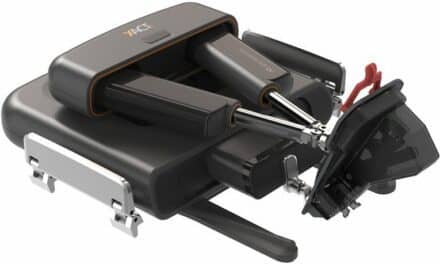Researchers at the University of California, Irvine (UCI) have developed a wearable, disposable respiration monitor that provides high-fidelity readings on a continuous basis. It’s designed to help children with asthma and cystic fibrosis and others with chronic pulmonary conditions. UCI biomedical engineers created the sensors using the popular children’s toy Shrinky Dinks, thin sheets of plastic that are painted or drawn on and then shrunk with heat.
Placed in two positions—one between the ninth and 10th ribs and another on the abdomen—the Band-Aid-like devices track the rate and volume of the wearer’s respiration by measuring the local strain on the application areas. The information gleaned could, in the case of asthma, help warn of an oncoming attack.
“The current standard of care in respiration monitoring is a pulmonary function test that’s often difficult to perform and limited in terms of the snapshot it provides of a patient’s respiratory health—meaning problems can sometimes be missed,” says Michael Chu, UCI graduate student researcher in biomedical engineering. “Our new stretch sensors allow users to walk around and go about their lives while vital information on the health of their lungs is being collected.”
The devices are made by applying a very thin layer of metal to a sheet of the plastic toy and then heat-shrinking it to cause corrugation. The film is then transferred to a soft, stretchy material—similar to small bandage—that can be adhered to a patient. Signals from embedded sensors can be transmitted via Bluetooth to be displayed on a smartphone app.
The devices were developed in the lab of Michelle Khine, PhD, UCI professor of biomedical engineering, who says she was inspired to pursue the innovation after her son was born nine months ago. Complications required the newborn to be confined to the neonatal intensive care unit, hooked up to an array of machines supplying oxygen and monitoring his breathing.
Khine says the days in the hospital following her son’s birth strongly motivated her as a biomedical engineer: “I sent some pictures of him all wired up to my students, and I said, ‘We have to be able to do better than this. This is 2018. It’s insane.’”
So far, members of the Khine lab have tested the new technology on healthy subjects, but there are plans for a pilot trial with a small number of asthma sufferers in the coming months.
Caption: Signals from the sensors, created using Shrinky Dinks, can be transmitted via Bluetooth to be displayed on a smartphone app. Courtesy: Josh Kim/UCI




